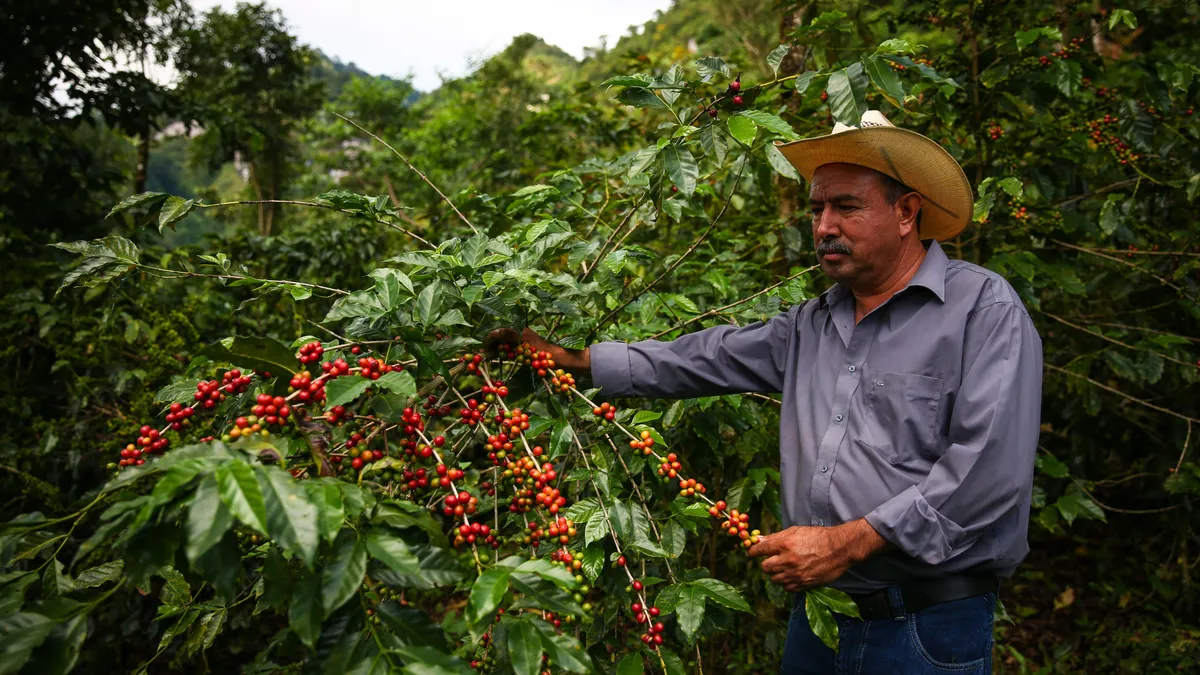Dive Brief:
- Starbucks is buying two innovation farms in Central America as it looks to protect its coffee supply from the effects of a changing climate.
- The farms in Costa Rica and Guatemala will study hybrid coffee varieties to advance research and development of climate-resilient coffee. The Costa Rica farm will also pilot drones and other labor-saving technologies as Starbucks explores the use of automation to address workforce shortages in Latin America.
- Starbucks now operates three innovation farms, buying its first in Costa Rica more than a decade ago. The coffee giant said it plans additional farm investments in Africa and Asia as it looks to build an innovation network across the world's largest growing regions.
Dive Insight:
Starbucks, which sources 3% of the world's coffee, is ramping up investments in its supply chain as experts expect hotter temperatures and changing climates to dramatically transform production and shrink the amount of land suitable for growing in half by 2050.
Starbucks sources and roasts only Arabica beans, which are sensitive to heat. Even a half a degree difference at the wrong time can make a big impact on coffee yield, flavor and aroma, according to the Climate Institute.
Rising temperatures have devastated production in many of the world's top growing regions: Punishing droughts in Brazil and Vietnam have recently pushed coffee prices higher and threatened supply shortages.
For companies like Starbucks, innovation will be key to safeguarding coffee supply and addressing some of the biggest barriers to expanding production, especially as global demand continues to rise. Daily coffee consumption in the U.S. reached a 20-year high this year, and global demand has continued to strengthen in countries including China.
At its Hacienda Alsacia innovation farm in Costa Rica, Starbucks developed a variety resistant to coffee rust, which has significantly lower yields and has remained a pressing issue in Latin America. The company has distributed approximately 90 million climate-resistant coffee trees and more than 53 million coffee seedlings to farmers.
New innovation farms in Asia and other areas of the world will enable new research tailored to specific geographies, and allow Starbucks to scale solutions across the “Coffee Belt” growing regions.
Beyond climate resilience, Starbucks is also researching solutions to lower its own environmental footprint. The chain has a goal of achieving "carbon neutral green coffee" by 2030.
“Through these innovation farms, we will develop solutions that will not only improve coffee productivity and quality but also empower farmers with the tools and knowledge needed to thrive in a changing world and challenging climate,” Roberto Vega, Starbucks vice president of global coffee agronomy, R&D and sustainability, said in a statement.














